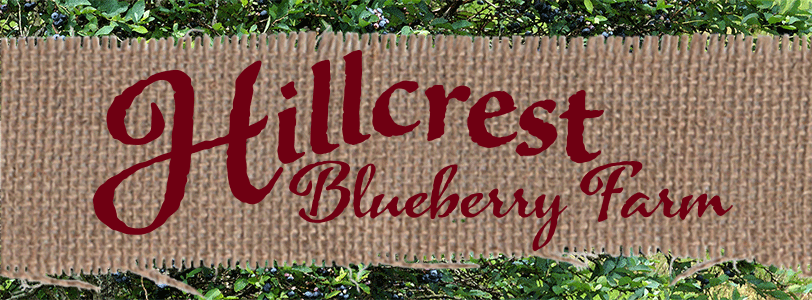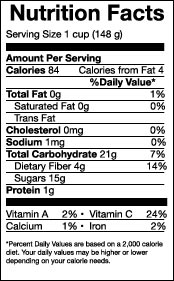
About Blueberries
Blueberries are flowering plants in the genus Vaccinium, section Cyanococcus. Blueberry species are native only to North America.
Emerging blueberries are pale green at first, then turn reddish-purple as they start to ripen, and finally turn deep indigo when ripe. Blueberries have a sweet taste when mature with variable acidity. Louisiana Blueberry bushes typically start bearing ripe fruit in June. Blueberry season peaks in July which is National Blueberry Month.
The origin of the Louisiana Blueberry comes from the Rabbit Eye plant (V. virgatum, syn. V. ashei) found in South Georgia and North Florida. Plants were brought into DeSoto Parish in the early 80's by Kay and Jay Jones which began an industry that thrives today.
There are 1,000,000 lbs. of berries produced in Louisiana annually with markets that range from commerical wholesale to "you pick" abbreviated "U-PICK" by local farmers.
Blueberries have a shelf life of 10 to 14 days when unwashed and can be prepared in many ways. From jelly to muffins to just plain eating, the blueberry is a very versatile fruit.
Nutrition Facts

Since 2005, blueberries have been discussed among a category of health foods called "superfoods" or "superfruits" having a desirable combination of rich nutrients, high level of antioxidants, and growing scientific study for health benefits. Blueberry juice is now a common superfood on many grocery store shelves along side pomegranate and other specialty juice products.
Blueberries have many micronutrients with high levels of the essential vitamins and minerals including manganese, vitamin B6, vitamin C, vitamin K and fiber. One serving of blueberries provides a relatively low glycemic load score of 4 out of 100 per day. Blueberries also contain anthocyanins, antioxidant pigments, and various phytochemicals possibly having a role in reducing risks of some diseases including inflammation and some cancers.
Researchers have shown that blueberry anthocyanins, proanthocyanidins, resveratrol, flavonols, and tannins inhibit mechanisms of cancer cell development. Similar to red grapes, blueberries contain in their skins significant levels of resveratrol, a phytochemical known for potential health-promoting properties.
Some reports even indicate that consumption of blueberries may alleviate the cognitive decline occurring in Alzheimer's disease and other conditions of aging. Research has also shown that blueberries may help prevent urinary tract infections.
Selecting Blueberries
It's important to be familar with the ripening characteristics of blueberries, especially if you pick your own. Some varieties may have fruit that is highly colored, but it still may not be at peak maturity. Blueberries increase in size and improve in flavor for several days after they turn blue. It takes three to six days for them to become fully ripe after turning blue.
You may even buy enough of these to freeze for such delicacies as blueberry muffins later on. Be sure the fruit is plump and firm. Keep refrigerated for up to two weeks, or repackage in suitable freezing bags or containers and freeze immediately without washing.
Storing Blueberries
Fresh Storage & Preparation
Handle fruit gently to avoid bruising. Bruising shortens the life of fruit and contributes to low quality. Sort carefully and remove berries that are too soft or decayed. Store berries loosely in a shallow container to allow air circulation and to prevent the berries on top from crushing those underneath.
Do not wash berries before refrigerating.
Store covered containers of berries in a cool, moist area of the refrigerator, such as in the hydrator (vegetable keeper), to help extend the usable life of the fruit. Recommended storage time is one to two weeks.
Before eating berries or using in your favorite recipe, wash berries gently in cold water, lift out of water and drain.
Freezing
Freeze blueberries without washing. When washed before freezing, blueberry skins become tough. To freeze, remove stems and trash, package tightly in freezer bags or containers, leaving 1/2 inch headspace. Seal airtight and freeze. Remove from freezer, rinse in cold water and use immediately.
Use frozen berries directly from the freezer. There's no need to thaw them if you use them in baked products, except for pancakes. Pancakes may not cook thoroughly in the center if the berries are frozen. Microwave the amount you need for a few seconds to thaw.
Canning
Canned blueberries can be used like fresh in muffins, pies, and cakes. For best texture and flavor blanch them before packing in jars. Work with only 2 or 3 quarts at a time.
Sort, wash and stem berries before blanching. Put berries in a single layer of cheesecloth or thin, white cloth about 20 inches square. Hold cloth by corners and dip berries in a kettle of boiling water. Hold for about 30 seconds or until juice spots show on the cloth. (You could also use a blanching basket.) Put the bundle in cold water immediately to cool the berries. Drain. Fill hot jars within 1/2 inch of top, shaking to pack berries. Do not add water or sweetening. Adjust lids and process in boiling water bath canner 15 minutes for pints, 20 minutes for quarts.
For fair exhibits, use syrup pack. Fill jars with blanched berries, cover with hot, light syrup (1 cup sugar to 1 cup water), seal and process as above.